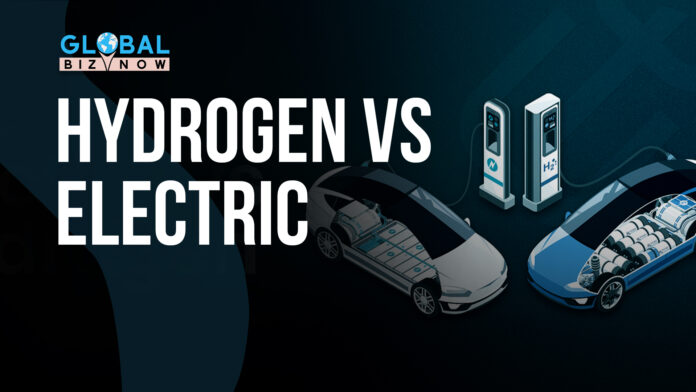A family in Norway made headlines when they were on a road trip spanning over 2,000 miles, without stopping once for a traditional fuel refill. Their vehicle? A sleek hydrogen-powered SUV. This story, though remarkable, isn’t just a testament to the growing feasibility of hydrogen technology, it also highlights the increasingly urgent debate over the future of clean energy vehicles: hydrogen fuel cells versus electric batteries.
Electric vehicles (EVs) have become almost synonymous with the push towards sustainability, driven by the success of companies like Tesla and the widespread adoption of EVs in Europe, China, and the U.S. With their impressive range, rapid advancements in battery technology, and extensive charging infrastructure, electric cars have rapidly moved from niche to mainstream. The global push to reduce carbon emissions has further accelerated this transition, with governments offering incentives and setting ambitious targets to phase out internal combustion engines.
Hydrogen fuel cell vehicles (FCVs) present a compelling alternative. Unlike EVs, which rely on large batteries to store electricity, FCVs generate electricity on the go by combining hydrogen with oxygen in a fuel cell. The only by product is water, making them just as environmentally friendly as their electric counterparts.
One of the most significant advantages of hydrogen vehicles is re-fueling time. The fastest EV chargers take at least 30 minutes for a substantial recharge, while hydrogen cars can be refueled in under five minutes, similar to traditional gasoline vehicles. This makes them particularly attractive for long-driven transport and regions where charging infrastructure are poor. Moreover, hydrogen has the potential to be more versatile. Various methods can produce hydrogen, including electrolysis powered by renewable energy, ensuring a truly green lifecycle. Additionally, hydrogen is easy to store and transport, addressing some of the logistical challenges faced by electric batteries, which rely on rare earth materials like lithium and cobalt—elements often mined under controversial conditions.
However, the hydrogen dream is not without its challenges. Infrastructure is the drawback of hydrogen vehicles. Building a hydrogen network is expensive and requires substantial investment, which has so far been slow to materialize.
It’s not yet clear whether hydrogen or electric will come out on top—or if there’s room for both. Electric vehicles are undeniably ahead, with the momentum of market adoption and infrastructure development behind them. But hydrogen’s potential in areas where EVs struggle, particularly in commercial transport and regions with less developed electricity grids, means it could still carve out a significant niche.
In the end, the choice between hydrogen and electric may not be an either-or scenario. The future of sustainable automotive solutions may involve a blend of both technologies, customized for different needs and regions. Innovation and a strong commitment to moving beyond internal combustion engines will drive the journey toward a cleaner, greener world.



